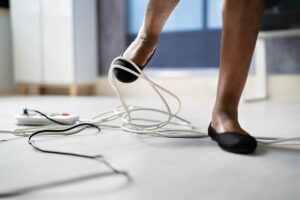When you have lost power, a generator can provide the electricity you need to keep your home warm and power your appliances. However, if a generator is not used properly, it may present serious hazards. Safe Electricity provides tips on using a portable generator safely.
A portable generator is usually gas powered and is movable. Before putting it to use, read and follow all manufacturer instructions. Also, check the cords for damage and ensure that the device is able to handle the wattage or amperage of the appliances that you plan to use. Your generator should have more output than the wattage of the electronics you will plug into it. Make sure there is nothing plugged into the generator when turning it on.
Perform regular maintenance on your generator. It is recommended that a generator be operated once a month for 10 minutes to ensure it is running properly.
Always make sure that the generator is grounded and used in a dry area. Use a generator only when necessary during moist conditions. Protect the generator by operating it under an open, canopy-like structure and on a dry surface where water cannot form puddles or drain under it. 2017GeneratorSafety
Never connect your portable generator to the structure directly. This can result in potentially deadly backfeed. Backfeed occurs when electricity gets fed back through the electrical system and meter into the power lines creating a hazard to line workers and others who may be near downed lines.
Remember to shut down your generator and give it time to cool before refueling. Always store your fuel away from the generator in an approved, non-glass safety container with a charged fire extinguisher nearby. Never operate your generator near flame-producing devices and be sure not to smoke nearby.
Never use a portable generator indoors and remember that opening a window or door or turning on a fan will not produce enough fresh air to reduce the danger of carbon monoxide emissions. Never run the generator nearby windows or doors that can draw the carbon monoxide back indoors. It is a good idea to clear at least three to four feet on all sides of the generator to allow for ventilation.
Install a battery-operated carbon monoxide detector and test it often, but also know and be on the lookout for the signs of carbon monoxide inhalation. Symptoms include dizziness, nausea, headaches, and lethargy. If you suspect that you or someone you are with is showing these symptoms, get some fresh air and seek medical attention.
For more information on electrical safety, visit SafeElectricity.org.









